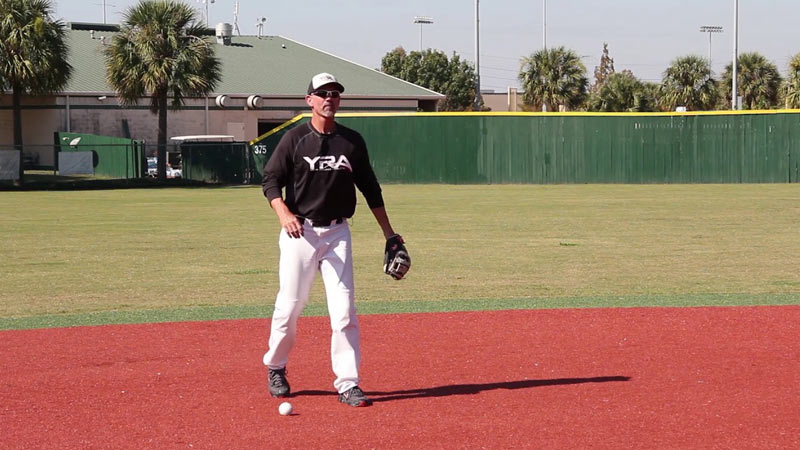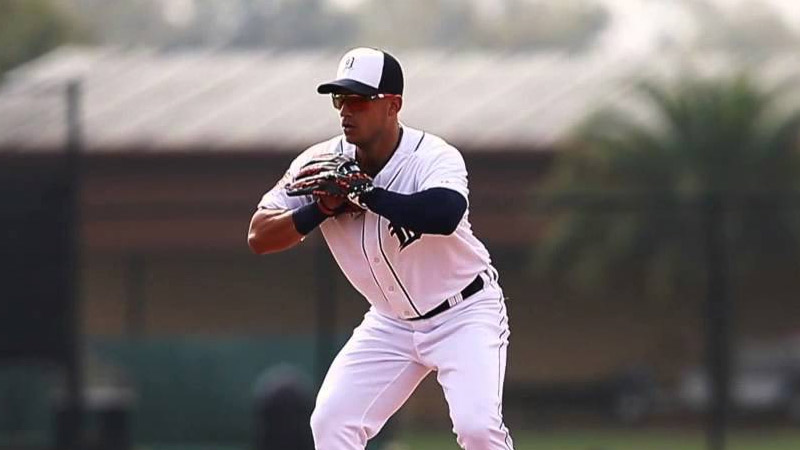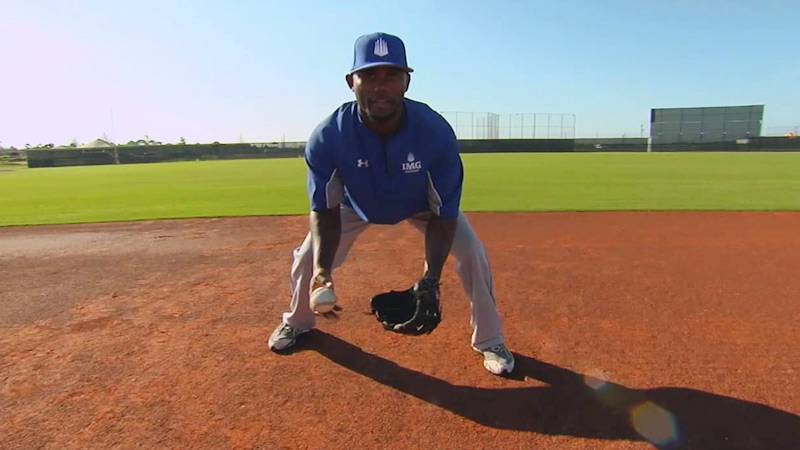The shortstop position in baseball is prominent and indispensable on the field. Serving as the linchpin between second and third base, the shortstop is pivotal for anchoring the infield defense. As an integral part of the team, the shortstop’s skill set and responsibilities encompass various crucial tasks.
From fielding ground balls precisely to executing quick and accurate throws, the shortstop plays a vital role in turning double plays and maintaining defensive stability.
Additionally, their ability to read the game, anticipate plays, and communicate effectively with teammates greatly influences their success.
This comprehensive guide will delve into the world of shortstop play, exploring the essential skills, techniques, and strategies required to master this demanding position.
Whether you are an aspiring shortstop or a passionate baseball fan seeking a deeper understanding of the game, this guide will equip you with the knowledge and insights to excel at the shortstop position.
How To Play Shortstop In Baseball?
Mastering the skills and techniques of fielding, throwing, communication, anticipation, and executing double plays is essential for excelling in the dynamic role of a shortstop on the baseball field.
Fielding Fundamentals And Techniques
Mastering the art of fielding is crucial for a shortstop. Position yourself on the left side of the infield with knees slightly bent and gloves low to the ground.
React quickly to ground balls and use backhand or forehand techniques to field them. Consistent practice will help develop muscle memory and improve your fielding skills.
Throwing Accuracy And Speed
To make accurate throws, focus on developing arm strength through regular throwing exercises. Maintain a compact throwing motion and transfer the ball quickly from glove to throwing hand. Aim for consistency and precision in your throws to different bases.
Communication And Coordination
Effective communication with teammates is vital. Establish clear cues for quick and efficient communication. Stay aware of your teammates’ positioning and provide instructions when needed. Act as a leader in the infield to ensure coordinated defensive plays.
Anticipation And Decision-Making
Anticipate plays by analyzing the hitter’s swing and tendencies. Understand game situations, such as the number of outs and baserunners, to make informed decisions. Continuously improve your decision-making skills through experience and situational awareness.
Double Play Execution
Executing double plays is a vital responsibility of a shortstop. Receive throws or field ground balls while maintaining a clear throwing lane to first base.
Pivot quickly toward second base with efficient footwork. To complete the double play, exchange the ball with your throwing hand swiftly and accurately.
Understanding The Role Of A Shortstop
The shortstop position in baseball holds a rich historical significance and plays a pivotal role. As a versatile infielder, the shortstop combines exceptional fielding, throwing, and decision-making skills to anchor the defense.
Their strategic positioning and ability to execute defensive plays effectively contribute to the team’s overall success.
Definition And Historical Significance Of The Position
The shortstop between the second and third base covers a significant portion of the infield. The position’s Importance dates back to the early days of baseball, where it emerged as a key defensive role.
Over time, the shortstop has evolved into a multi-dimensional player, contributing offensively and defensively.
Importance Of Fielding, Throwing, And Decision-Making Skills:
Fielding lies at the core of the shortstop’s responsibilities. With ground balls being a common occurrence, exceptional fielding skills are necessary to secure outs and prevent base hits.
Equally crucial is the ability to make accurate and robust throws, often under time pressure, to complete defensive plays.
Additionally, the shortstop’s quick decision-making skills are vital in determining whether to attempt a double play, cover a base, or make a crucial relay throw.
Shortstop’s Role In Defensive Strategies And Positioning:
The shortstop’s strategic positioning plays a critical role in defensive alignments. They often cover second base on stolen base attempts, backup plays, and shifting defensive alignments based on game situations.
Their understanding of the game, situational awareness, and team communication contribute to a cohesive defensive strategy.
Essential Skills And Techniques For Shortstops

Shortstops in baseball require a diverse set of skills to excel in their position. This section will delve into fielding, reflexes, agility, throwing accuracy and speed, communication, and coordination, anticipation and decision-making, backhand and forehand plays, and navigating double spaces effectively.
Fielding Fundamentals:
Fielding fundamentals encompass positioning, footwork, and glove work. Shortstops must master positioning themselves in the right spot to anticipate and react to incoming ground balls.
Developing precise footwork enables quick movement and efficient fielding. Additionally, honing glove work ensures secure and clean fielding of ground balls.
Quick Reflexes And Agility
Shortstops must possess quick reflexes and agility to react swiftly to fast-moving balls. The ability to read the ball off the bat and make split-second adjustments is crucial in effectively fielding grounders and line drives. Agility allows shortstops to cover a wide range of the infield and easily make challenging plays.
Throwing Accuracy And Swiftness
Shortstops must have the skill to throw accurately and swiftly. Making solid and precise throws to various bases is vital in turning double plays and preventing base runners from advancing. Proper throwing mechanics, arm strength, and consistent accuracy contribute to successful defensive plays.
Communication And Coordination
Effective communication and coordination with other infielders are essential for seamless defensive execution.
Shortstops must communicate infield positioning, cut-off responsibilities, and relay instructions to ensure efficient defensive strategies.
Coordination with teammates helps establish strong defensive alignments and enhances overall team performance.
Anticipating Plays And Decision-Making:
Shortstops must possess the ability to anticipate plays and make split-second decisions. By studying hitters’ tendencies, reading game situations, and understanding the strengths and weaknesses of opponents, shortstops can position themselves optimally and anticipate where the ball will be hit.
Quick decision-making skills enable them to react swiftly and make the appropriate play, whether throwing to a specific base or initiating a double play.
Backhand And Forehand Plays:
Mastering the execution of backhand and forehand plays is essential for shortstops. The backhand technique involves fielding balls to the shortstop’s glove side. In contrast, the forehand technique is employed for balls hit to the shortstop’s throwing side.
Proper positioning, footwork, and glove work contribute to the successful execution of these plays, enabling shortstops to make accurate throws and complete outs.
Navigating Double Plays Effectively:
Shortstops play a pivotal role in turning double plays. They must possess the skill to receive throws from second basemen or field ground balls while maintaining a clear throwing lane to first base. Quick footwork and efficient ball transfer from glove to throwing hand is essential in executing smooth and swift double plays.
Physical Conditioning And Training For Shortstops
Physical conditioning plays a vital role in the performance of a shortstop in baseball. This section focuses on strength, speed, flexibility, core strength, fielding drills, and mental conditioning.

Importance Of Strength, Speed, And Flexibility
Developing power in key muscle groups such as the legs, core, and throwing arm is vital for shortstops. Speed and agility are crucial for quick reactions and lateral movements. Flexibility helps prevent injuries and enables a broader range of motion during fielding and throwing.
Specific Exercises To Improve Agility And Quickness
Incorporate drills focusing on footwork, change of direction, and explosive movements to enhance agility and speed. Cone drills, ladder drills, and shuttle run effectively improve the shortstop’s overall athleticism.
Building Core Strength For Stability And Power
A strong core provides stability and control for shortstops. Include planks, Russian twists, and medicine ball rotations to strengthen the abdominal, lower back, and oblique muscles.
Incorporating Fielding Drills And Simulated Game Situations
Practice fielding drills that simulate game situations, including various types of ground balls, pop-ups, and throws from different angles. Repetition and game-like scenarios help develop muscle memory, reflexes, and decision-making skills.
Mental Conditioning: Focus, Concentration, And Composure
Shortstops must train their mental game to maintain focus, concentration, and calm under pressure. Incorporate techniques like visualization, breathing exercises, and mindfulness to enhance mental toughness and resilience.
Strategies And Tips For Success As A Shortstop
A shortstop can elevate their performance on the field by implementing effective strategies and honing specific skills. This section will explore valuable tactics such as developing a pre-pitch routine, reading hitters, communicating with teammates, adapting to game situations, and analyzing opponents to gain a competitive edge.
Developing A Pre-Pitch Routine And Staying Alert
Establishing a pre-pitch routine helps you prepare mentally and physically for each play. Stay focused and alert, maintaining a ready position with your weight evenly distributed. This routine enhances your reaction time and lets you anticipate the ball’s direction.
Reading Hitters And Anticipating Their Tendencies
Observing the hitters’ stance, swing mechanics, and previous at-bats can provide valuable insights. Look for patterns and trends to help you expect where the ball may be hit. Adjust your positioning and be ready to react accordingly.
Effective Communication With Teammates
Clear and timely communication with fellow infielders is vital for successful defensive plays. Use verbal and non-verbal cues to coordinate positioning, shifts, and coverage responsibilities. By effectively communicating, you can optimize defensive strategies and minimize errors.
Understanding The Game Situation And Adapting Accordingly
As a shortstop, you must always have a deep understanding of the game situation. Consider the score, number of outs, baserunners, and the inning. Adjust your positioning and decision-making based on specific circumstances to maximize defensive effectiveness.
Analyzing Opponents’ Strengths And Weaknesses
Study the opposing team’s hitters and identify their strengths and weaknesses. This analysis allows you to position yourself strategically and adjust defensive strategies accordingly. You can increase your chances of making successful plays by exploiting weaknesses and anticipating the opponents’ tendencies.
Common Challenges Faced By Shortstops
As a shortstop, you will encounter challenges that test your skills and mental fortitude. These challenges include handling unpredictable ground ball bounces, navigating the speed and agility of base runners, adapting to different weather conditions, overcoming errors while maintaining confidence, and finding the right balance between offensive and defensive responsibilities.
Handling Ground Balls With Unpredictable Bounces
Shortstops often face challenging hops due to uneven field surfaces or irregular bounces off the infield dirt. It requires quick reflexes and the ability to adjust on the fly to field the ball cleanly and make accurate throws.
Dealing With The Speed And Agility Of Base Runners
Base runners are constantly seeking opportunities to steal bases or take extra bases. Shortstops must possess the skill and quickness to make accurate throws and apply effective tags to deter base runners’ advances.
Fielding In Different Weather Conditions
Playing shortstop means being prepared to field in various weather conditions, including rain, wind, or extreme heat. Adapting to wet or muddy fields and adjusting your approach to account for altered ball trajectories is crucial.
Overcoming Errors And Maintaining Confidence
Errors are a part of the game, but shortstops must have the resilience to bounce back quickly. It is essential to learn from mistakes, stay focused, and maintain confidence in your abilities to perform at a high level.
Balancing Offensive And Defensive Responsibilities
Shortstops are expected to contribute both defensively and offensively. Striking the right balance between maintaining defensive excellence while being productive at the plate requires mental discipline and effective time management.
Despite the challenges, embracing these aspects of being a shortstop and continuously working on improving in each area will help you overcome obstacles and thrive in this demanding position.
Frequently Asked Questions
Question: What qualities make a great shortstop?
Answer: Great shortstops possess exceptional fielding skills, quick reflexes, strong throwing arms, excellent decision-making abilities, effective communication, and the mental resilience to handle pressure situations.
Question: How do I improve my throwing accuracy as a shortstop?
Answer: To improve throwing accuracy, focus on proper mechanics, such as maintaining a compact motion and transferring the ball quickly from the glove to the throwing hand. Regular practice, including drills that simulate game situations, can enhance accuracy and consistency.
Question: What should I do if I’m struggling with fielding ground balls?
Answer: If you’re struggling with fielding ground balls, focus on improving your footwork, positioning, and glove work. Work on maintaining a low center of gravity, reacting quickly to the ball’s direction, and practicing the proper techniques for backhand and forehand plays.
Question: How can I improve my speed and agility as a shortstop?
Answer: To improve speed and agility, incorporate exercises that target explosiveness, quickness, and lateral movements into your training routine. Agility ladder drills, cone drills, and plyometric exercises can enhance your speed, agility, and overall athleticism.
Question: What mental strategies can I use to stay focused during a game?
Answer: Stay focused during a game by developing a pre-pitch routine, focusing on the present moment, and practicing mental visualization to anticipate plays. Utilize deep breathing exercises and positive self-talk to maintain composure and concentration throughout the game.
Conclusion
Recapping the key points discussed, aspiring shortstops can excel in baseball by honing their fielding fundamentals, improving throwing accuracy, and embracing the position’s responsibilities. Through relentless practice and perseverance, they can significantly impact the field.
Embrace the challenges, never cease practicing, and relish your vital role in baseball as a shortstop.







